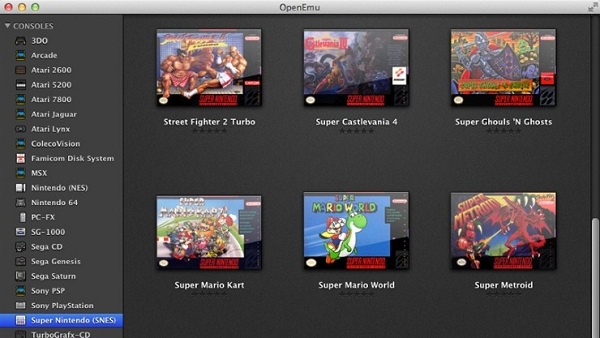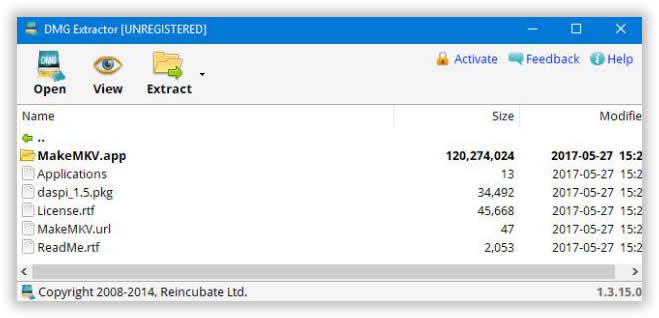Do you want to view and extract the contents of a Mac OS X (macOS) Disk Image (.DMG file)? File Viewer Plus can view the contents of DMG files and extract the files and folders to a location on your hard drive. View and extract contents of DMG files without 7-Zip. Try File Viewer Plus today! Free 14-day trial. Independent View. DMG files generated by Apple Mac machines are readable with this tool on Windows Operating Systems. Free DMG File Reader is a standalone utility that does not require any external environment to open & read DMG files.
Frequently Asked Questions
Listed Commonly Asked Questions and Answers
Will the software extract HTML files on machine?No, the tool only view & open DMG file in Windows 7 / 8 / 10 which gives the facility to preview HTML files within the tool. In order to save you can go for DMG Viewer Pro.
Overview Features of DMG Viewer Tool
- Download & Run DMG Reader Tool
- Browse & Open DMG File on Windows System
- View DMG File data items within Preview Pane
- Allows to Search by Created, Date Modified ,Last Accessed Date, Subject
- Support to View Read-Only & Compressed DMG File
- Support Windows 10, 8, 7 & below versions
Yes, the DMG viewer software supports to preview the attachments of EML file within DMG File. Go to the preview window by double clicking on the file . Then double click the attachments within the mail & you can preview the attachments.
 How can I filter EML files while using Search feature in the tool.I wanted to enlist all EML files within a folder. Do I need to enter the Subject for all EML File?
How can I filter EML files while using Search feature in the tool.I wanted to enlist all EML files within a folder. Do I need to enter the Subject for all EML File?The tool provides you with facility to search files using, Text as well as File type .You can simply select the folders & search 'EML' file to enlist all the EML files within the selected folders.
On which version of Windows Operating System can I Open my DMG Files?
This DMG file Viewer program supports all versions of Windows OS & helps to read & open Mac OS X DMG file in Windows 10, 8 and all the below versions
How many DMG Files can I add at a time for extracting email files from it?In single running instance of the tool, the software allows adding single DMG files. You can add multiple DMG files by selecting 'Open Tab' to Add DMG files one by one.
By default Mac doesn’t show you the Root directory in Finder or Desktop. In this guide, I will show you how to access the root directory in Mac, there are several ways to do it. I will also tell you how to see the hidden directories in root directory.
Method 1: Show Macintosh HD in Finder and Desktop
In Mac, the root directory can also be referred as Macintosh HD as this will show you the root directory files and folders. By default you won’t find it in Finder and desktop as most of the users do not need to access the system files and folders. However you can change the settings in Finder Preferences to show it in Finder sidebar and as an icon on desktop.
To do this: Open Finder, go to Finder Preferences from the top finder menu and check the Hard disks option in General tab. This will show the Mac HD on Desktop.
To show the Mac HD in Finder sidebar: Open Finder, go to Finder Preferences from the top finder menu and go to Sidebar tab then check the Hard disks sub option listed under Devices. This will make the Macintosh Hd visible in finder sidebar.
Note: Refer this guide to read this in detail along with the screenshots: Show Mac HD in Finder and Desktop.
Method 2: Go To Folder option in Finder
You may not know this but there is a Go to Folder option in Finder that opens up a dialog where you can type the path and it would open up the content of given path in Finder.
You can use this option to open the root directory, all you have to do this is type the
To open this, Open Finder, in the finder menu under Go tab select Go to Folder.
This will open up this dialog box. Type
Method 3: Using command line
You can also access the root directory from command line. To do this: Open terminal: Press
Type the following command in terminal and hit
View Contents Of Dmg Mac
Note: There is a space between open and
Show hidden files and sub directories in root directory

By default the root directory will not show you the directories like /usr, /bin, /etc etc. To make them visible you need to show the hidden files.
Open terminal and type the following command and hit return.
View Contents Of Dmg Macro
Refer this guide to read about it in detail: Show/hide hidden files in Mac